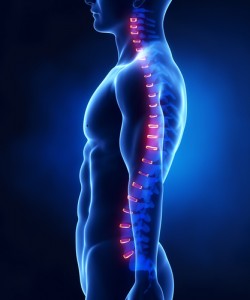3 Simple Ways to Test Your Posture – And Why You Should
Your mom may have reminded you to stand up straight when you were younger. Her advice was right, and not just for cosmetic reasons.
It turns out that poor posture doesn’t just affect the way you look and how you present yourself to the world. It can actually cause quite a bit of harm to your body.
When we slouch or slump over, our spine takes on the same shape and causes bad circulation. This can cause vertebrae to deteriorate over time and lead to chronic fatigue. And – not surprisingly – this slumping can cause chronic back, neck, and should pain that can leave you feeling miserable.
Back pain affects many people and can even lead to a herniated disc. How can you prevent such damage to your spine and to your overall well-being?
The first step is to assess your posture. Here are three simple tips that go beyond reminding yourself to stand up straight – use them to see how close you are to being posture perfect.
The Mirror Test
Stand in front of a mirror, and then close your eyes. Now, begin marching in place with your feet shoulder-length apart. Open your eyes, and examine your shoulders to see if they are tilted or rounded forward. Also note whether your head is tilted or turned to one side. These are all indicators of poor posture.
The Tape Test
For this exercise, you’ll need a full-length mirror. Place a piece of masking tape down the center of the mirror, and then place another one across the mirror, horizontally, at shoulder height. Now stand in front of the mirror as you normally would, noting whether you are, in fact, centered. Also note whether your head is tilting to one side or the other. Does one shoulder look higher than the other? All of these are signs that you have poor posture.
Lead Foot Test
For this test, your feet will need to be wet (you might want to do it right after stepping out of the shower). Stand on a thick rug with your wet feet and step off. Check out your footprints – are they even? Notice whether one side of an imprint is deeper than the other. This test will indicate whether you have a weight-bearing problem, which may be related to a posture problem.
If you have any of the poor posture indicators noted above, be sure to get in touch with Dr. Sharma today. Taking care of posture problems now can help you avoid back injuries later.
In our next post, we’ll discuss ways to correct poor posture.

Categories
Archives
Contact Dr. Mudit Sharma
Phone: (571) 921-4877
Toll Free: (855) 774-6334
Monday – Thursday: 8am – 4pm
Friday: 8am – 2pm
Fredericksburg
4604 Spotsylvania Parkway, Suite 300 Fredericksburg, VA 22408
Manassas
8650 Sudley Road, Suite 315
Manassas, VA 20110-4418

